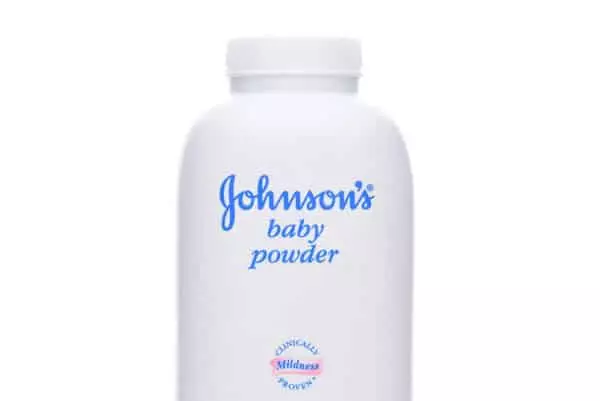
Talcum powder lawsuits have been a hot topic lately, especially as new documents reveal that Johnson & Johnson, a defendant in many of these cases, may have been aware of the toxic contaminants in their products all along. Court documents revealed that the company explicitly trained their employees to always reassure any concerned consumers that the products never contained any asbestos, despite knowing for decades that their talc had been contaminated.
But Johnson & Johnson isn’t the only company with products on the market that knowingly contained asbestos and put consumers in danger. Other products like Cashmere Bouquet talcum powder from Colgate-Palmolive and Desert Flower from Whittaker Clark and Daniels have also been targeted for talcum powder lawsuits against them once consumers were diagnosed with mesothelioma decades after using these products.
Asbestos-Contaminated Talc Powder
Talcum powder has been used for many years in a wide variety of products, from baby powder and soap to more industrial lubrication and ceramics. Talc is a clay mineral that has been widely used because of its ability to absorb moisture. In its loose powder form, the mineral’s ability to reduce moisture and odor has made this product especially useful in personal hygiene products.
On its own, talc is considered rather safe, though there has been some research over the years on its link to certain forms of cancer. The main safety concern, however, is talc that has been contaminated with asbestos, specifically tremolite. Because they are chemically similar, these minerals are often mixed together in natural deposits, and separating them can be challenging.
Talc is mined in the United States and throughout the world, and as part of the mining process workers may drill, blast or crush the stone to extract the mineral. As they mine the talc, these contaminated mines may release the deadly tremolite asbestos fibers, putting the miners at risk as well as the consumers of the talc-based products the mineral is eventually used for.
In 1973, the FDA developed new standards that specifically stated all talc should be tested to ensure it is asbestos-free, a law that remains in place today. In documents revealed in recent lawsuits, Johnson & Johnson stated a long history of testing of their talc never revealed any asbestos in their goods, and they are confident that their products have always been asbestos-free.
The company also supplied documents that showed these tests of their talc through 1972, which revealed no trace of asbestos. However, experts have noted that even if testing did occur and showed no asbestos, the accuracy and precision of these tests would likely not be as reliable as testing done today. Additionally, other reports from 1973 and on used as evidence in lawsuits against Johnson & Johnson have shown in a study of their talc mine in Vermont that officials found trace amounts of two types of asbestos fibers.
Even more recent studies with more trusted testing may not necessarily show the whole picture. In 2012, the FDA released information on its evaluation for potentially contaminated talc in dozens of cosmetic products that took place over several years. The agency was able to test products like body powder and foundation from four companies and said they found no asbestos. However, the results were merely labeled as informative, not conclusive because so few companies participated.
Even trace amounts of asbestos in a small amount of talc can pose a serious risk to the public, as no amount of exposure to asbestos is considered safe. The lack of certainty in the risk of asbestos in consumer products, and evidence that asbestos has been found in baby powder, toys, and crayons raises even more concern for consumer safety.
Mesothelioma and Talcum Powder Lawsuits
The link between contaminated talcum powder and the risk for developing cancer has been known for decades. In recent lawsuits against Johnson & Johnson, one of the primary defendants in numerous talcum powder lawsuits against their products, documents revealed a blatant disregard from the company for its consumers’ safety. The company faces thousands of lawsuits in regard to women developing ovarian cancer as a result of using these contaminated products, but they and companies with similar products have also faced similar lawsuits tied to mesothelioma.
In the past several years, they have been found liable in many talcum powder lawsuits in regard to ovarian cancer. Most recently, the company faced a $417 million verdict to a California woman in August who developed ovarian cancer after using their baby powder for decades. While there haven’t been as many lawsuits in regard to asbestos yet, the latency period for mesothelioma and other asbestos-related diseases of upwards of 50 years to show symptoms implies that there could be more in the future.
Most recently, Johnson & Johnson faced an asbestos talcum powder lawsuit involving California resident Tina Herford, who claimed she developed mesothelioma due to her use of their baby powder products for nearly 40 years. This was the company’s first trial in regard to mesothelioma specifically. Earlier this month, a jury ruled in favor of Johnson & Johnson, though her lawyer said in a statement one verdict shouldn’t imply that the company is innocent and juries will begin to hold them liable.
Other companies have faced similar lawsuits from mesothelioma victims. Colgate-Palmolive is facing a lawsuit brought by mesothelioma survivor Mary Lyons. Lyons provided evidence that her use of their Cashmere Bouquet powder for several decades is at least partially responsible for her diagnosis. The court determined there is enough evidence to move forward with a trial.
In the recent past, mesothelioma victims have exercised their legal rights and won in similar cases. In 2015, Colgate-Palmolive was found liable and California resident Judith Winkel was awarded $13 million. She provided the court enough evidence that her use of Cashmere Bouquet through the 1970s led to her later mesothelioma diagnosis. Whittaker Clark and Daniels have also faced lawsuits against their talcum powder products, like Desert Flower and Clubman powders, with $7 million and $18 million verdicts in 2015 and 2016 respectively.
Regardless of the outcome of these trials, it’s important for these companies negligently selling contaminated talc or any products contaminated with asbestos to be held liable. Consumers facing these diagnoses in part from using these products need to understand their rights and hold these corporations responsible. Hopefully, in the future, these companies and others will realize the severe impact their actions had and make positive changes to prevent any further harm to consumers.



